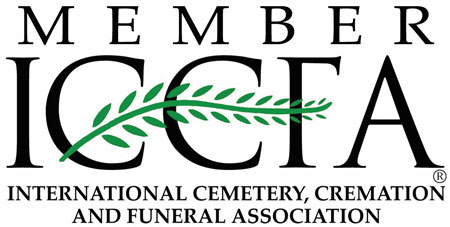Guidelines for Funerals and Burials
Guidelines for Funerals and Burials
TYPICAL ORDER OF FUNERAL SERVICE
- Processional Congregation
- Presentation of Buddhist Name
- Opening Remarks
- Personal History
- Gatha
- Sutra Chanting (please refer to ‘Special Readings or Prayers and Meditations’ page)
- Sanbujo
- Shoshin-ge
- Incense Offering
- Family
- Relatives
- Representatives of various organizations
- Gatha
- Eulogy, Telegrams & Email messages
- Epistle of Rennyo and Sermon / Dharma Talk:
- Words of Appreciation on behalf of the family
- Closing Remarks
- Recessional
BUDDHIST TRADITIONS
Gassho and Raihai
Literally meaning ''joined palms," Gassho is used to express hello, goodbye, and thank you among Buddhists worldwide, but in Jodo Shinshu, it is a way of expressing gratitude and reverence. A Nenju encircles the hands with the tassels or strings hanging below, and it is held lightly between the thumbs and the fingers.
Raihai is performed with a deep bow (about forty-five degrees) with Gassho. During Raihai, the hands should be held steady while the body is bent forward from the hips and then back to the upright position.
While performing Gassho, Shin Buddhists intone the Buddha's Name, Namo Amida Butsu, as an act of reverence and gratitude to Amida Buddha. The gesture of gassho and Raihai is not a prayer or a request beseeching favours.
The number of repetitions of the Nembutsu is not predetermined and generally need not be in unison. Often, rather than a precise intonation of Namo Amida Butsu, a contraction such as ''Na'man'da'bu" is more natural and quite acceptable.
Nenju
The Nenju is the string of beads used in Buddhist rituals and meditation. It is also called a Juzu, or "bead-counter." Because Jodo Shinshu does not use it as an aid in meditation, it is more appropriately called a Nenju, a string of beads to make us mindful of the Buddha. The single strand of beads is an abbreviation of the 108-bead Nenju used by monks and ministers. Lay members generally carry a single-strand Nenju. For such a strand, the number of beads is insignificant, so a sufficient number is used to create a Nenju of a suitable length and size. One variation is the wrist Nenju, worn on the left wrist.
The Nenju should be treated with the utmost respect at all times. When not in use for Gassho and Raihai during a service, it should be held in the left hand or placed around the left wrist.
Incense offering (Oshoko)
The practice of offering (or "burning") incense symbolizes purification. There are many references to the use of incense and aromatic woods in the sutras, and countless similes and metaphors are given in the commentaries. Essentially, incense has been traditionally associated with cleanliness. It is a way to provide a fresh and pure scent to the home and temple, enhancing the spiritual atmosphere of the place of reverence and the follower. It symbolizes the purification of mind and body before paying homage to the Buddha.
The human body is likened to incense itself. While the smoke of incense rises, it releases a beautiful scent which fills the room. At the same time, the smoke rising from the burning incense reminds us of the transiency of all existence. With the human body, even as breath and life rise from it, it is simultaneously ageing and dying.
In the Jodo Shinshu tradition, the long incense sticks are not placed in a standing position in the burner. Rather, they are broken into appropriate lengths and laid into the burner after being lit. There is no rule regarding the number of sticks of incense used.
Oshoko is performed in conjunction with the Gassho and Raihai. Simply proceed toward the altar and bow lightly at about two paces in front of the table holding the incense burner. Step up to the table, left foot leading. Remove the receptacle's lid containing the ground incense and prop it on the edge of the container. With the right hand, take a pinch of the ground incense and drop it unto the burner over the burning incense. This needs to be done only once, and bringing the incense to your forehead is unnecessary. Gassho, say the Nembutsu, Raihai, take two or three steps back, bow lightly in homage to Amida Buddha, and be seated. If many people are in line for Oshoko, rather than taking two or three steps backwards, it is acceptable to step to the side and bow before being seated.
Homyo and Ingo
The Homyo or Buddhist Name affirms that a person has accepted the path of the Buddha Dharma (teachings.) It will be given to those who have entered the Buddhist path (such as a monastic life or a minister of a Buddhist institute) by taking the Tokudo (Buddhist ordination) ceremony. A lay person who follows Buddhism (usually by being a Buddhist temple member) can also obtain Homyo from the temple's minister. In Japanese tradition, a lay person who hasn't obtained Homyo in present life will receive it prior to the funeral service.
All Homyo has the same first letter – the Japanese character Shaku as the family name of the Homyo. It represents that the person with this name has become the family (or disciple) of the founder of Buddhism, Sakyamuni Buddha. Equally, there are no distinctions between the good and the bad, the beautiful and the ugly, the rich and the poor. Within this true and non-discriminating Dharma ocean, all beings are, without exception, released from this suffering world of Samsara (reincarnation) and are equally drawn into the Buddha's wise and compassionate heart.
In addition, an Ingo or posthumous name often prefaces the Homyo. Originally, the Ingo was a title given to an emperor upon retirement into the priesthood. Later, the Ingo was accorded to those who became the head priest of a temple. In recent times, however, the Ingo has become a way of recognizing those who serve to promote the Buddha Dharma (teachings.)
DEATH RITES AND TRADITIONS
Last Rites (Rinju Gongyo/Makuragyo)
Traditionally, this was a service conducted at the deathbed as a dying person's last opportunity to express gratitude to the Buddha. Nowadays, it is commonly held upon the death of a person. A sutra is chanted at the person's side, hence the term "pillow-sutra" (Makuragyo).
Wake Service (Otsuya)
The Wake was originally a series of all-night services conducted by the priest, along with the family, who sat with the body throughout the night before the funeral service. This custom was later shortened to a single service observed the night before the funeral.
Funeral Rites (Soshiki, Sogi)
Funeral rites are conducted as a final tribute to the deceased. The service consists of a series of rituals that begin with the designation of a Homyo (Dharma Name) if the deceased has not obtained it. This is followed by the chanting of Shoshin-ge and the offering of incense by the congregation. Words of condolence are extended, and a eulogy and a dharma talk are given. The service consists of reading Epistle of the White Ashes, written by Rennyo, the eighth abbot of the mother temple (1415 – 1499).
After the funeral, the deceased's body is either committed for interment or cremation. A brief service is held before the final parting, either at the cemetery or at the crematory.
Family Memorial Service (Hoji)
Buddhists consider the memorial service a significant occasion to remember the deceased with feelings of gratefulness and love. For Jodo Shinshu practicers, the significance of a memorial service is not for appeasing or consoling the spirits of the deceased. However, it is, instead, the opportunity to pay tribute to and recall cherished memories of the departed while listening to the Buddha Dharma (teachings.) In other words, the Hoji is not for the sake of the deceased but is, indeed, for the sake of the living. In remembering our loved ones, we acknowledge their influence on our lives.
Generally, the service consists of chanting sutras, the offering of incense by members of the family and friends, and a Dharma talk by the minister.
The first such memorial service is the Seventh Day Memorial; thereafter, services are conducted on each seventh day up to the forty-ninth day. The Hundredth Day Memorial Service is also observed. In Japan and some eastern Asian countries, performing services each seventh day is no longer strictly observed, though it remains in some areas. After the Seventh Day Service, special emphasis is placed on the Forty-ninth Day Service.
It is also a Japanese Buddhist tradition to hold special services on the first anniversary of death. The second anniversary service is observed as the Third Memorial. The succeeding major memorials observed are the Seventh, Thirteenth, Seventeenth, Twenty-fifth, Thirty-third, Fiftieth, and Hundredth. Memorials are counted with the funeral service as the first Memorial. Hence, the second anniversary marks the Third Memorial. This way of counting years is based on Chinese Confucianism and is easily confused. Families are encouraged to consult the minister about the proper timing for those memorial services.
Funeral Service Notes
- Families may be directed to any/all of the following people: the Funeral Coordinator, the assigned Funeral MC, and the Funeral Liaisons from Kelowna Buddhist Temple to assist with the funeral arrangement details
- Music, by way of Gatha (hymns), is supplied by Kelowna Buddhist Temple
- Memorial cards, if required, may be requested of the Funeral Home during the Arrangement meeting with family
- Fees for use of Kelowna Buddhist Temple, Honorarium for Minister, Reception and supplies, Organist, and MC may be discussed with funeral service leaders from Kelowna Buddhist Temple
- Flowers without thorns to be used in arrangements
- Exceptions are always considered upon request
Disclaimer: Every effort has been made to ensure the information in these pages is accurate and in accordance with the teachings of the Buddhist Faith. Springfield Funeral Home does not represent or speak on behalf of the Buddhist community. Please defer to the Kelowna Buddhist Temple if there is a discrepancy of information contained in these pages. We would appreciate being notified of any errors or omissions. Please send any such notices to contact@springfieldfuneralhome.com.




